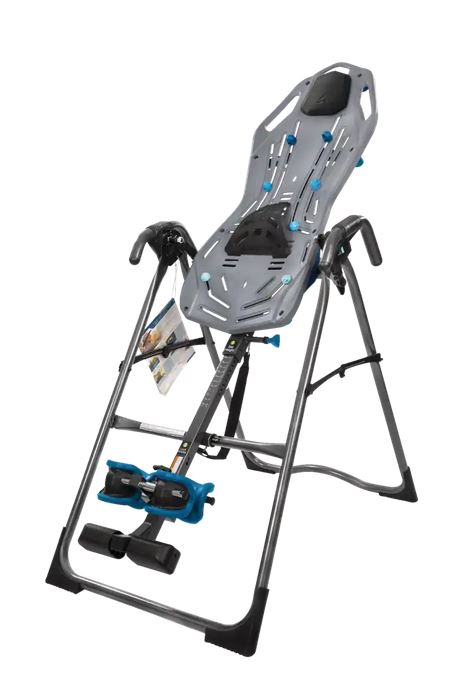Arthritis is swelling and tenderness in a joint. Roughly half of all people in the world will experience the condition at some point during their lifetime. There are several different forms of arthritis, and they can affect an individual’s ability to maintain normal daily activities.
The most common type of arthritis is rheumatoid and osteoarthritis. Inverse tables can help alleviate arthritis by decompressing the spine, aligning the vertebrae, and stretching specific muscles before returning to a standing position. The decompression of the spine, re-aligning and stretching of muscles can help to reduce pain, decrease swelling and improve movement for people with arthritis.
This article will answer your question; are inversion tables safe for arthritis? Let’s get started!

What are the symptoms of arthritis?
Arthritis is the inflammation of joints. Joints are composed of fibrous tissue, cartilage and bones. Over time, arthritis can damage these tissues to the point that they become painful and stiff. The symptoms of arthritis include:
- Pain
- Stiffness
- Decreased range of motion
- Swelling
- Redness
Does an inverted table relieve the signs of arthritis?
According to experts, inversion tables can relieve pain and inflammation in arthritic joints. Inversion tables are the only equipment that can stretch muscles and improve blood flow to help alleviate the symptoms of arthritis. Stretching helps to relieve pain and reduce stiffness which many people living with arthritis experience. However, if you have had a knee or joint surgery, an inversion table might not be suitable since it can stretch tissues that you have recently injured.
Are inversion tables safe for arthritis?
The answer is yes and no. This depends on the extent of your arthritis. Inversion tables may be beneficial if arthritis is in the early stages and the symptoms are mild. If your arthritis is in the advanced stages, it means your bones and joints have been severely affected and trying to stretch those tissues can lead to further damage.
If you are experiencing pain, stiffness, and decreased range of motion, an inversion table might help relieve those symptoms. The only thing I would caution against is re-injuring a joint by stretching. So be careful not to stretch positions where you have recently had knee or hip surgery.
If you have more advanced arthritis, it could be unsafe to use an inversion table. If you have joints that have been previously injured or if your injury is already causing inflammation and pain, then it’s not wise to invest in an inversion table. Remember, an inversion table is not a cure for arthritis; it can only relieve symptoms associated with arthritic conditions.
Combining inversion therapy with other treatments
Chiropractor care, physical therapy, and other forms of treatment should be used in conjunction to treat arthritis. An inversion table can assist with overall health and wellness; however, it should not be viewed as a cure for arthritis. Remember that stretching is highly recommended because it helps the body relax, relieves muscle tension and improves the blood flow to the area. Stretching is also ideal because it helps relieve stress, which can contribute to inflammation of the joints.

When should I use an Inversion table?
An inversion table is recommended when:
– When the pain is mild
– When you can efficiently perform daily activities.
– At the onset of arthritis symptoms or when your condition is in its early stages.
– After exercising helps to relax muscles and improves blood flow and flexibility.
– If you have lower back pain or disc problems, never use an inversion table if you have had a recent knee or hip surgery. Rotating your joints could cause damage to your new joint.
FAQs
1. Who shouldn’t use an inversion table?
Patients with heart conditions, high blood pressure, and osteoporosis should not use an inversion table because inversion can result in blood pressure spikes and heart attacks.
2. How long should I use an inverted table?
It would be best if you used the table for a maximum of 5 minutes at a time. The regularity and length of your sessions will depend on your condition and how you feel after each session. It is crucial to listen to your body and not push it beyond its limit.
3. Is an inversion table good for arthritis?
Yes, it relieves symptoms of the condition. However, it should not be considered a cure. It is advisable to consult your doctor to determine if an inversion table is right for you.
Conclusion
An inversion table is safe for arthritis if your condition is in the beginning stages. If advanced, it would be wise if you sought other treatment options. Consulting your doctor is essential to determine if an inversion table is right for you and what type of results to expect.





